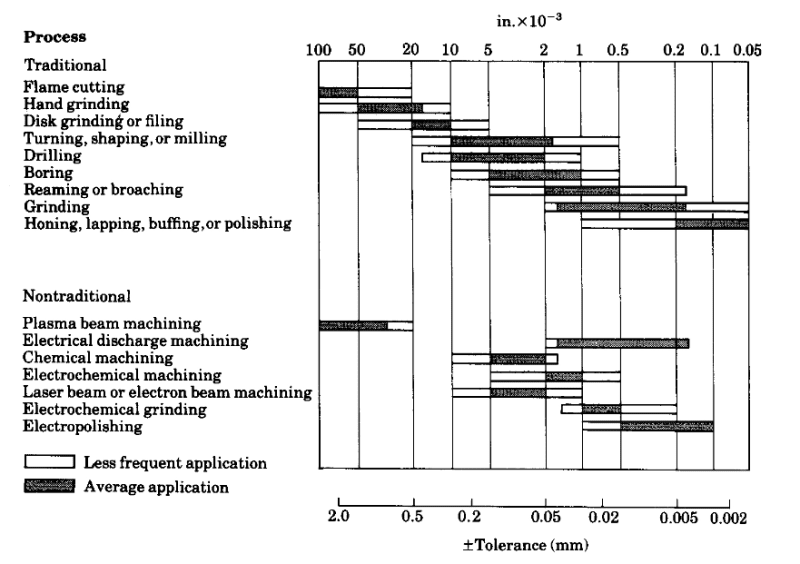Hello,
TL;DR: What's a common perpendicularity tolerance for a 3 mm h6 pin?
I have a common scenario where I have two steel dowel pins pressed into one part, which locate another part that has a hole & slot feature. Ultimately, I'm looking to see if anyone has any guidance on what sort of perpendicularity tolerance would be reasonable for these. The parts I'm working with used to be called out with plus/minus tolerancing, which only specified the position of the pin. So the perpendicularity has been basically whatever is best effort by the machinist. I also don't have precise enough equipment to measure the perpendicularity of the parts we have now.
Does anyone have a ballpark good value for perpendicularity of a press-fit pin? Say, a 3 or 5 mm diameter pin with an h6 ISO tolerance.
Many thanks!
TL;DR: What's a common perpendicularity tolerance for a 3 mm h6 pin?
I have a common scenario where I have two steel dowel pins pressed into one part, which locate another part that has a hole & slot feature. Ultimately, I'm looking to see if anyone has any guidance on what sort of perpendicularity tolerance would be reasonable for these. The parts I'm working with used to be called out with plus/minus tolerancing, which only specified the position of the pin. So the perpendicularity has been basically whatever is best effort by the machinist. I also don't have precise enough equipment to measure the perpendicularity of the parts we have now.
Does anyone have a ballpark good value for perpendicularity of a press-fit pin? Say, a 3 or 5 mm diameter pin with an h6 ISO tolerance.
Many thanks!

